-
Posts
274 -
Joined
-
Last visited
-
Days Won
26
Content Type
Profiles
Forums
Blogs
Gallery
Posts posted by dwestbury
-
-
On 9/28/2020 at 4:27 AM, johnnymeek said:
I managed to get this working, sort of. I built the to two applications and it runs, but the performance is bad.
The playback is very choppy and distorted. I think I read somewhere that this could be due the midi interface. Which interface are you using?
The streaming ASID over MIDI signal has been steady and stable for me over both my portable iRig (https://www.ikmultimedia.com/products/irigmidi2/) and my full sized iConnectivity mioXL (https://www.iconnectivity.com/mioxl).
Best,
-Darrell
-
On 8/12/2020 at 5:46 PM, anonyme-x22 said:
...Also when changing the volume on the VST, it doesn't seem to work, it's like a mute ?
Which VST are you using to control the sammichSID? Assume something like CTRL (for making patches) or Lemur for live MIDI control?
-
On 4/2/2020 at 9:34 AM, Noise-Generator said:
There is also an arm2sid, a double sid and it does also fm. https://retrocomp.cz/produkt?id=20
It's an emulation of this (OPL2) FM Chip https://en.wikipedia.org/wiki/Yamaha_YM3812
I guess it would be possible to use this with a mbox sid but it sure needs some adjusting. Maybe it's possible to put an alternative firmware inside a slave core. But, no, I don't think so because you would have the same parameter Menu than the Master. By the way, the MBox FM uses an OPL3.
It's much cheaper to buy the ARM2SID pair than getting two individual ARMSIDs and you get the added benefit of FM capability. Although, I'm not sure it's possible to take advantage of that with any of the current mbox firmwares?
This side-by-side sound comparison shows pretty good sound quality too: http://kompjut0r.blogspot.com/2018/04/sid-8580-vs-armsid-vs-swinsid-ultimate_12.html
Is anyone actually using ARM2SID's in their mbox SID yet? Wondering what level of customization would be required to get the basics operational?
-
21 hours ago, the_duckchild said:
...got several from ...ebay...
https://www.ebay.co.uk/usr/commodore_mark1The going rate for SIDs on eBay has been hovering in the ~$80 USD range for a while.
it's great to see that the seller you've referenced has some current SID inventory (both 6581 and 8580) in the $35 - 40 range.
I've also had some good luck with this source, who typically has 8580R5 in the ~$45 range, when inventory is available.
-
-
Anyone having any luck finding a new source for MB6582 PCBs?
I've been scouring the forums here, eBay and other for sale / auction sites, to no avail...
Appreciate any insight - Cheers
EDIT: ModularAddict is back online and they have inventory of MB6583 PCBs
https://modularaddict.com/instantsearch/result/?q=mb6582
-
Also interested in a set of MB6582 PCBs, so going to follow this thread closely.
-Darrell
EDIT: ModularAddict is back online now and they have inventory of MB6582 PCBs
https://modularaddict.com/instantsearch/result/?q=mb6582
-
On 9/8/2020 at 5:42 AM, ganchan said:
maybe i have a spare, let me check!
Keeping my fingers crossed ;-)
EDIT: ModularAddict is back online and they have inventory of MB6583 PCBs
https://modularaddict.com/instantsearch/result/?q=mb6582
-
They were the only source I know of for MB6582 PCB sets. They also typically had Waldorf knobs in stock. Hope they open the shop again soon..
-
With the ModularAddict shop (temporarily?) closed down, there's currently no one available to ummm, feed my addiction!
I'm on the lookout for a set of MB6582 (Rev 2) PCBs (both Base and Control Surface).
Anyone have some lying around burning a hole in their parts bin?
Cheers...
-
Sounds like a possible encoder debouncing issue?
This article may shed some light:
http://www.buxtronix.net/2011/10/rotary-encoders-done-properly.html?m=1Quote“…
The vast majority of encoders suffer from one or more of the following flaws:
• Debounce handling. Mechanical switches are imperfect, and bounce on and off during transitions, over a few milliseconds, which is enough to be sensed as discrete changes by the MCU. Many implementations simply detect a change from 00 to 01 and signal it. But with switch bounce, it could be detected as many events. Thus, implementations often include debounce routines. but these add additional code, and also at high rotational rates, they filter out the events and break.
• Direction changes. Some implementations use algorithms that expect direction changes to occur at the '00' bit position. If a change occurs mid-step, they get confused and return too many events, or a spurious one in the wrong direction.
• Complexity. Many implementations are plagued by complicated conditionals and loops. They have unwieldly long if-then statements that are impossible to debug, yet can still suffer from the above problems. Complex code also leads to consumption of valuable code space.
• Weak algorithms. Far too many implementations simply look for a single transition from one state to another, rather than following and checking for valid states. This leads to odd quirks and bugs.…”
The recommendation is to implement better debounce handling in the code...
I haven't looked at the section of the MB-6582 firmware that handles the decoders, but perhaps someone more familiar could comment?
-
if there’s enough interest in a new bulk order from the Hong Kong eBay supplier, I can assist with the logistics on that.
-
Quote
Question:
Do anyone have a link for a supply useable on the sammichSID, which permit me to use the 6581 & 8580 (and the swinsid) ?
Also, is it possible to switch off the leds on the top of the control surface ?
The sammichSID build guide has an option to include jumpers that will let you change the voltage to your SID, so you can swap them safely. The kit from eBay should come with machine pins that you can solder into the filter capacitor spots. This will let you swap capacitors when you change SIDs.
As far as the control surface LEDs go, there’s no built-in physical switch to disable them, but you could make your own kill switch. Another option could be customIzed firmware to disable on-demand, using the menu. Perhaps someone in these forums could help with that?
Good luck with the build! -
On 7/7/2020 at 5:43 AM, anonyme-x22 said:
...No timeline.
Preference ?
The first question is, which MIDIBox v2 variant do you want to have built?
A sammichSID will support 2 x SID chips (either 6581 or 8580). Kits are still available on eBay for ~$228 USD, plus ~$28 shipping costs from Hong Kong to USA. The kit typically includes 1 or 2 SwinSIDS, which can be swapped for real SIDs
> In my experience the total DIY build time for this is about ~6-7 hours (so would need to negotiate a labor fee)
> http://www.midibox.org/dokuwiki/doku.php?id=sammichSID
A MB-6582 will support up to 8 x SID chips (in pairs of two 6581's or 8580's). It also includes a more full featured control surface and a routing matrix. There are no complete kits that I'm aware of, so parts need to be ordered separately from suppliers like Mouser, DigiKey, etc.
> The parts to build a complete synth will run between $600-700 USD without SIDs.. The average cost for SIDs on eBay is around ~$80 USD, so that can add up to ~$640 for sound chips. You can chose alternatives, like SwinSID nano (avg $20 ea.), ARMSID (avg $32 ea.) or FPGASID (avg $45 ea.).
> In my experience the total DIY build time is about ~20 hours (so would need to negotiate a labor fee)
> http://www.midibox.org/dokuwiki/wilba_mb_6582
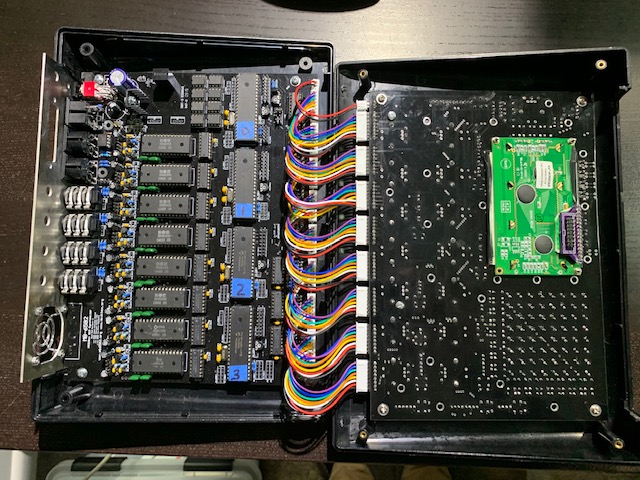
Both of these models support the same sound patch libraries, so it's really just a matter of how many active sound engines you want to have available.
-
I could potentially do this.
let me know what your preferences and timeline look like.
-
@Audio Dandy Congratulations! Please enjoy!
-
23 hours ago, Noise-Generator said:
Special MIOS Code? Are you sure? I know that there is a special SwinSID firmware for better filters with the swinsid...
Don't know why I said MIOS code, I actually meant a special firmware config...
I noticed these lines in the .asm file that would need to be tweaked to support SwinSID.
;; 0: SwinSID extensions disabled ;; 1: SwinSID extensions enabled #define DEFAULT_ENABLE_SWINSID 0 ;; 0: only waveform 0-8 selectable ;; 1: waveform 0-15 selectable (e.g. for selecting additional SwinSID Waveforms) #define DEFAULT_ENABLE_UPPER_WAVEFORMS 0Was just wondering whether this teensy project would be 'drop in compatible' or possibly require similar tweaks.
Thanks again @Noise-Generator for raising awareness of this project and offering to keep the forums updated!
Cheers!
-
This project has some real potential. It will be important to see how compatible these chips will be with MIDIBox.
I know there’s special MIOS code for SwimSID. Wonder if any mods will be needed to use this board?Thanks for sharing @Noise-Generator!
-
On 5/20/2020 at 0:56 AM, synthmania said:
@dwestbury was told that sammichSID has a different interface, even if it is using MIOS; in fact I saw that it has a row of buttons that is blank (I assume those are the #1 to #5 buttons for options, there is no label on them from the picture I saw), and a second row with F1 F2 and F3; the midibox V2 manual does not seem to have any reference to these. The other side has the shift, menu, and top-bottom buttons; which are in the manual. Is there a sammich manual beside the build guide?
Also as side note; using 6581, the manual warns about leakage of the sound after pressing a key; how bad is it? Is there a way to solve it? Because if I am recording audio that has leakage and background sound, I can't really do much to fix it (I can fix background noise with the audio tools available these days, but I don't think that will work for actual persistent audio that leak. I won't know until I actually build either solution so I want to be prepared about it
Yes, the button layout on the MB-6582 and sammichSID are different, but the main functions you’ll generally need are still accessible on the condensed sammichSID interface. The main difference is really the smaller screen and the missing routing matrix. The interface was really only designed for two rows anyway. The extra rows show secondary info, like scroll bars and progress indicators etc. I realized that I wanted the routing matrix however - that’s what ultimately lead me to build the MB-6582.
I don’t really use 6581’s, so I haven’t experienced the sound leakage thing. I’ve read that others have dealt with it by using a noise gate in their DAW.
-Darrell
-
If you’re not comfortable soldering (and troubleshooting) a full sized set of PCB yet, then you could do what @Noise-Generator suggests and work with the individual modules. Although in my humble opinion the final product will come out looking a bit messy with all the ribbon cables joining the boards together, etc.
As an alternative to that, you could consider building a sammichSID kit from eBay (https://www.ebay.com/itm/153859268349). I’ve purchased and built a few of these over the years with no issues. It’s basically a single core module, combined with a single SID module and some bank sticks on one small PCB and a shrunken down, but still very usable control surface on another. It’s functionally complete and it let’s you fully experience the MIDIBox SID v2. It uses the same sound patches as the MB-6582, etc.
The seller is based in China, so the kit could take a few weeks to arrive, but it comes complete with everything you need, including the PCBs, all discrete components, a couple SwinSIDs, which are much cheaper than real SID chips, a decent metal case, a power supply, etc.
Following the build guide(http://www.midibox.org/dokuwiki/doku.php?id=sammichSID#sammichSID_build_guide), you can probably complete the whole thing and be up and playing within ~5-6 hours.
Cheers
-
19 hours ago, Noise-Generator said:
Well this is he third issue I also had but forget how to solved this ;)
But I'm kind of sure it was a short - located at the bankstick area and connections.
Appreciate the general guidance...
I haven't looked at this in a few days, but will hover around the banksticks later this week.
Cheers,
-Darrell
-
It’s become increasingly challenging to find suppliers that stock the original C64 sized power switch for MB-6582 and sammichSID.
My standby had been the Retroleum shop: https://www.retroleum.co.uk/c64-misc-components-fuse-etc
But, they're not shipping at this time, due to Covid-19 impact
I managed to find two suppliers on eBay that seems to have good on-hand supply:
Suppler based in UK
https://www.ebay.com/itm/401182009175
Supplier based in the US
https://www.ebay.com/itm/402027981537
Cheers!
-
 2
2
-
-
I'm experiencing a strange issue where my MB-6582 comes up from a cold start and instantly begins cloning it's cores, without me holding down the menu button.
Then, once booted, it drops into the oscillator config page and freezes there, completely unresponsive to any buttons or knobs.
I assume it's a bad connection or short somewhere in the core1 and/or control surface signal path, so here's what I've tried so far:
> completely removed the ICs from U16 - U23 in case they were causing whacky feedback, but no change
> exhaustively searched for shorts and bad solder joints all around U1_CORE1 (all seems OK)
> multimeter continuity and resistance testing for each socket pin, above and below the base PCB (all continuity seems OK, with resistance levels between .2 -.3 ohms on each pin)
> multimeter testing for each core1 component:
Designator Description Component type used Notes C1_CORE1 Capacitor - MLCC 33pF OK C2_CORE1 Capacitor - MLCC 33pF OK C3_CORE1 Capacitor - MLCC 100nF OK D1_CORE1 Diode 1N4148 OK Q1_CORE1 Crystal 10MHz 10 Mhz, confirmed with Oscilloscope R1_CORE1 Resistor 100 Ohm 1/4W 1% OK R10_CORE1 Resistor 10K 1/4W 1% OK R12_CORE1 Resistor 1K 1/4W 1% OK R2_CORE1 Resistor 1K 1/4W 1% OK R6_CORE1 Resistor 1.2K 1/4 1% Reads @ 299 Ohms from each core R9_CORE1 Resistor 10K 1/4W 1% OK Appreciate any suggestions or guidance..
Cheers
-
Holy moly... My Core1 MIDI Issues are finally SOLVED...
Turns out I had the wrong sized caps in C1_CORE1 and C2_CORE1 (embarrassing).
This was impacting the oscillator frequency and effectively crippling core1.
I have a big box of MLCC caps, which must shifted around in their compartments.
That will teach me to examine those tiny little numbers better and test each component, before soldering!
So, once I corrected the caps, all MIDI communication though MIOS are working again, wheeew...
This old post from 2009 was immensely helpful, since it provided a solid technique that allowed me to leverage the oscillator frequency from core2 (working) into core1 (which was not working).
I soldered some jumpers wires to the OSC1 and OSC2 pins on an extra 40-pin socket I had laying around and used them to bridge in the oscillators from core 2.
Once the right frequency was fed into core1, it was able to communicate with MIOS properly.
Once I knew the Oscillator was the issue, I was able to narrow my focus and figure out that I had the wrong caps in place (Doh!)
So, now that my MIDI issue is resolved, I should be ready to tackle my SID audio issue next... ;-)
More to come,
Cheers...




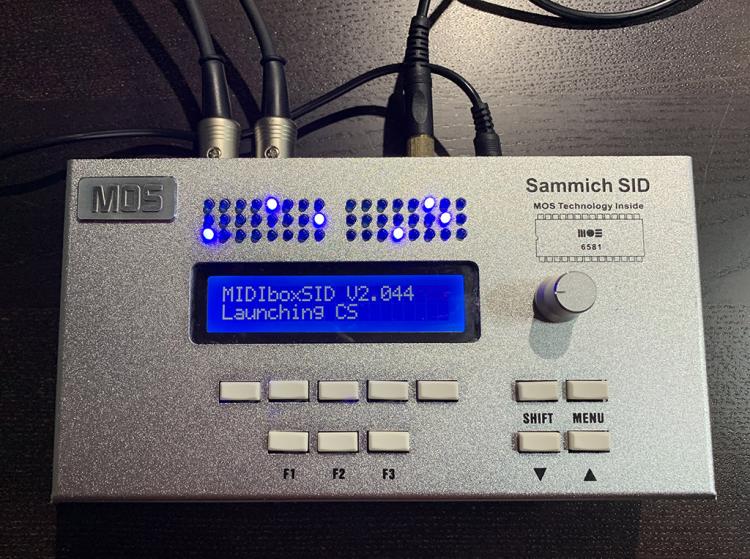

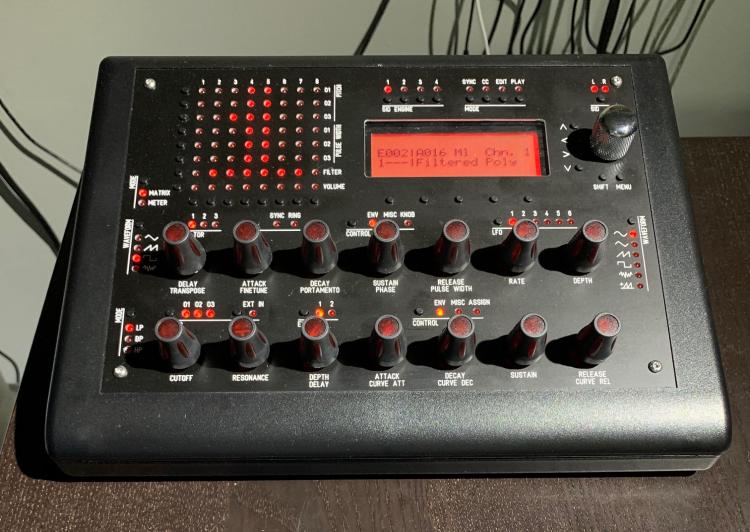
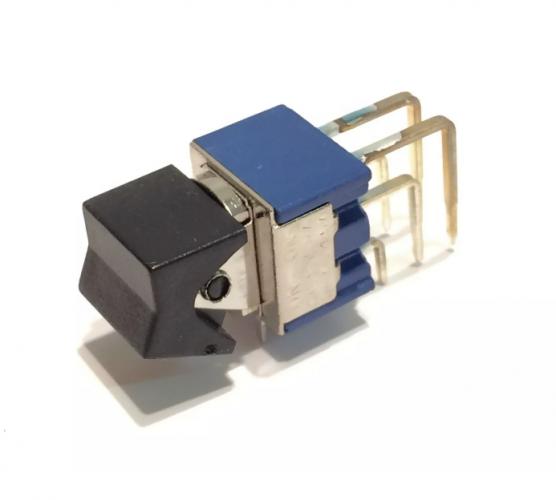
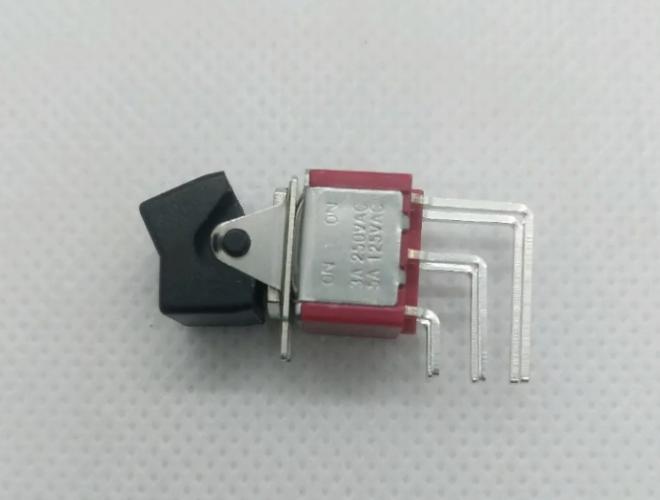

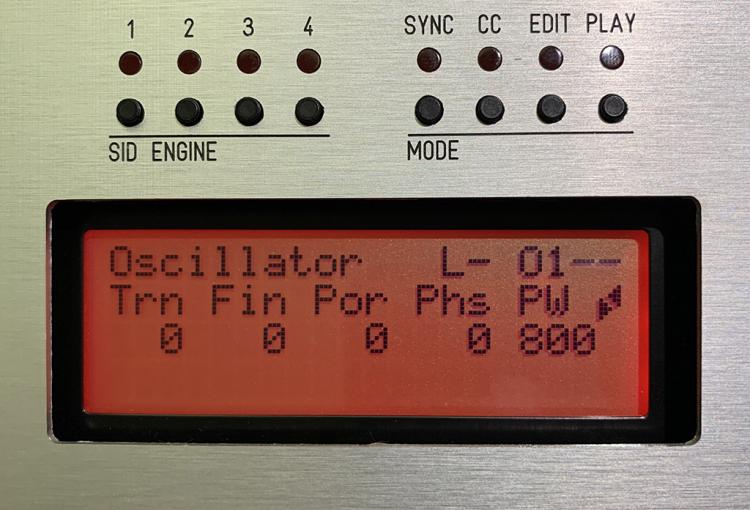
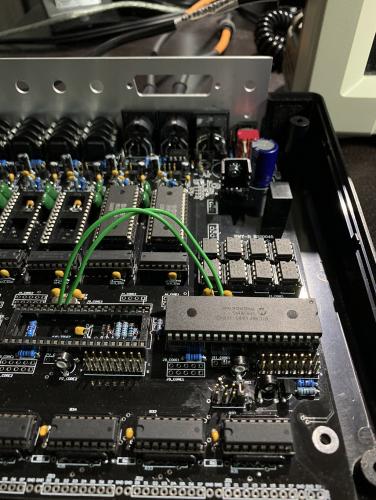
SID "Clones" List/Sources/Experiences
in MIDIbox SID
Posted · Edited by dwestbury
Doing a little digging with the mbhp_core_v3 schematic, I can see that J14 should be accessible from the PIC's RD4 pin:
http://www.ucapps.de/mbhp/mbhp_core_v3.pdf
Following the relevant trace on the base PCB schematic shows this:
http://www.midibox.org/dokuwiki/lib/exe/fetch.php?media=mb-6582:mb-6582_base_pcb_r2_color.pdf
Which is tied into the CS pin of U2_SIDx :
http://archive.6502.org/datasheets/mos_6582_sid.pdf
Would I need to reroute this to make an ARM2SID pair work in U1_SID1 and U2_SID1 of my MB-6582?
Thx,
-Darrell